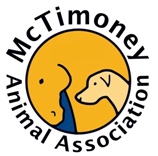|
|
Brief History of McTimoney Animal Manipulation
The McTimoney Animal Manipulation technique was developed by John McTimoney in the 1950’s. John McTimoney was a human therapist who modified his human adjusting technique to apply specifically to animals. Today, the McTimoney Post Graduate Diploma/MSc in Animal Manipulation is the only university-validated course of its kind in Europe. The McTimoney approach to manipulation is a non-invasive gentle physical therapy that helps to realign and balance the animal’s musculoskeletal system, restoring health, movement, soundness and performance. Most animals readily accept the treatment, and no anaesthetic or drugs are needed. The animal's spine, pelvis and other relevant joints are assessed for any misalignments (a joint "locked" within its normal range of motion) and any associated muscle spasm. These misalignemnts are then treated using very rapid, precise movements with the hands (known as adjustments), thereby correcting the misalignment, restoring range of movement within the joint and releiving any associated muscle spasm.
Consider seeking treatment if your animal displays any of the following signs: Horses and large animals: · Sore or cold backs · Stiffness on one rein · Difficulty striking off on a particular leading leg in canter · Disunited canter · Uneven wear of shoes/hooves · Unexplained deterioration in athletic performance · Uncharacteristic changes in behaviour/temperament · Aggression/irritability when tacking up · Irregular action/movement · Unexplained resistance e.g. bucking/rearing/napping/refusing jumps · Difficulty flexing/bending · Lameness where all other causes have been ruled out
|
|
|||||||||||||||||||||||||||||

